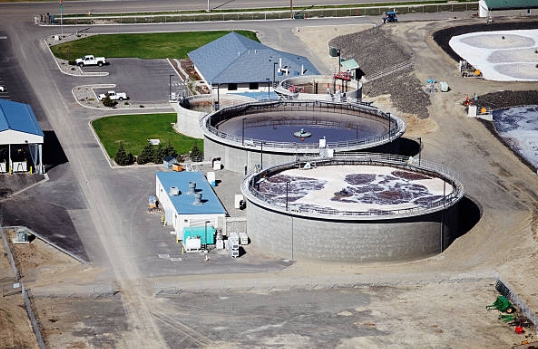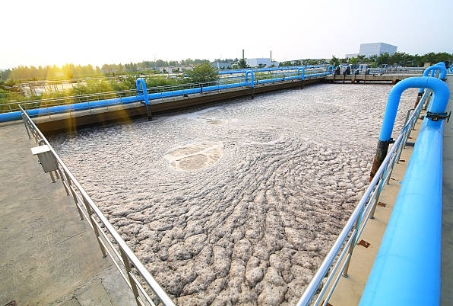Please Choose Your Language
Views: 222 Author: Carie Publish Time: 2025-04-02 Origin: Site








Content Menu
● Sources of Sewage Contamination
>> 1. Direct Discharge from Sewage Treatment Plants
>> 3. Sewage Spills and Infrastructure Failures
● Environmental Impacts of Sewage Pollution
>> 1. Marine Ecosystem Degradation
>> 3. Long-Term Ecological Damage
● Health Risks Associated with Sewage Contamination
● Economic Impacts of Sewage Pollution
● Case Studies: Impact of Sewage Pollution on Beaches
>> 2. Imperial Beach, California
● Solutions to Mitigate Sewage Pollution
>> 1. Advanced Treatment Technologies
● FAQ
>> 1. What are the main causes of sewage contamination at beaches?
>> 2. How does sewage pollution affect marine ecosystems?
>> 3. What health risks arise from swimming in contaminated waters?
>> 4. Can advanced sewage treatment technologies eliminate contamination?
>> 5. How can communities address sewage pollution at their beaches?
● Citation
Beaches are vital ecosystems and recreational hubs, yet they face mounting threats from pollution, particularly from sewage treatment plants. These facilities, designed to manage human waste, often become sources of contamination due to infrastructure limitations, operational failures, and environmental factors. This article examines how sewage treatment plants contribute to beach pollution, the resulting environmental and health impacts, and potential solutions to mitigate these challenges.

Sewage treatment plants frequently release treated or untreated wastewater into nearby water bodies. While treated effluent is meant to meet safety standards, it still contains residual pathogens and pollutants. During system malfunctions or heavy rainfall, untreated sewage may bypass treatment altogether:
- In Sydney, untreated sewage is discharged through cliff-face outfalls during overflow events, releasing millions of liters daily[5].
- In California, urban runoff and treated sewage discharge introduce significant fecal contamination into coastal waters[1].
Stormwater runoff exacerbates sewage contamination by carrying pollutants from urban areas into beaches. This runoff often contains:
- Animal waste
- Fertilizers
- Chemicals
- Pathogens like E. coli and fecal coliform bacteria[2][5].
Aging infrastructure and illegal connections to storm drains frequently result in sewage spills. For example:
- In Kuwait Bay, outfalls discharge raw sewage into shallow waters with minimal circulation, leading to severe microbial pollution[2].
- In the U.S., combined sewer overflows during heavy rains release untreated wastewater into coastal areas[3].
Sewage introduces nutrients, heavy metals, and toxic chemicals into marine environments:
- Excess nutrients cause eutrophication, leading to oxygen depletion and harmful algal blooms[3].
- Pathogens infect marine organisms like fish and shellfish, disrupting biodiversity[2].
Pollution erodes sensitive habitats such as coral reefs and mangroves. For instance:
- Sunscreen chemicals washed off swimmers harm coral reefs[5].
- Trash carried by stormwater accumulates on beaches, degrading habitats for birds and marine animals.
Continuous sewage discharge alters water chemistry in shallow bays with slow tidal flushing. Elevated levels of Biological Oxygen Demand (BOD), Total Suspended Solids (TSS), and other pollutants lead to irreversible ecological damage[2].
Contaminated water contains harmful bacteria such as E. coli, Salmonella, and Campylobacter. Swimmers exposed to these pathogens risk developing:
- Gastrointestinal illnesses
- Skin infections
- Respiratory issues[3][7].
Sewage often carries antibiotic-resistant bacteria, posing long-term public health risks.
In coastal areas like Imperial Beach, airborne toxins from polluted waters have been linked to respiratory problems among residents[2].

Beach closures due to contamination deter tourists, causing significant economic losses for coastal communities:
- In Maine's Machias Bay, combined sewer overflows led to $2 million in economic losses due to shellfish harvesting closures between 2001 and 2009[3].
- Harmful algal blooms caused by nutrient overloads often result in prolonged beach closures[3].
Polluted waters disrupt marine food chains and reduce fish stocks:
- In Kuwait Bay, high fecal coliform concentrations have been linked to declining fish populations[2].
- Contaminated seafood poses health risks for consumers.
Researchers found human fecal matter in stormwater drains even during dry weather conditions. After rainfall events, bacterial levels exceeded national health risk thresholds[5].
Over 100 billion gallons of untreated sewage from Mexico's Tijuana River have polluted the area since 2010. This has resulted in prolonged beach closures and public health crises for local residents[2].
Outfall J3 discharges raw sewage into shallow waters with minimal tidal circulation. Fecal coliform levels at this site exceed regulatory limits by over 600 times, leading to severe ecological degradation[2].
Modern sewage treatment methods such as UV disinfection and tertiary filtration can significantly reduce bacterial concentrations before discharge:
- Deepwater ocean outfalls transport treated effluent far offshore for better dilution[5].
- However, these technologies require substantial investment.
Upgrading sewer systems is critical to preventing leaks and overflows:
- Coastal cities must invest in resilient infrastructure capable of handling extreme weather events.
- Regular maintenance can prevent illegal connections that exacerbate pollution issues[2][5].
Strict enforcement of discharge standards under programs like the Bathing Water Directive ensures compliance by sewage treatment plants:
- Monitoring programs can track pollutant levels continuously.
- Penalties for non-compliance can deter illegal discharges.
The contamination of beaches by sewage treatment plants is a multifaceted issue with far-reaching consequences for ecosystems, public health, and local economies. While advanced technologies and regulations offer pathways toward cleaner coastal waters, addressing this issue requires sustained investment in infrastructure upgrades and public awareness campaigns.

Sewage contamination is primarily caused by direct discharge from treatment plants, stormwater runoff during rainfall events, and infrastructure failures leading to spills.
Sewage pollution introduces harmful pathogens, chemicals, and nutrients that disrupt biodiversity, cause algal blooms, and degrade sensitive habitats like coral reefs.
Exposure to pathogens in polluted water can lead to gastrointestinal illnesses, skin infections, respiratory issues, and antibiotic-resistant infections.
While technologies like UV disinfection can significantly reduce bacterial levels in effluent water, they are limited by cost and system capacity during heavy rainfall.
Communities can invest in resilient infrastructure upgrades, enforce strict regulations on wastewater discharge, adopt advanced treatment methods, and promote public education about pollution risks.
[1] https://pmc.ncbi.nlm.nih.gov/articles/PMC6604031/
[2] https://www.frontiersin.org/journals/environmental-science/articles/10.3389/fenvs.2022.914011/full
[3] https://oursharedseas.com/sewage-pollution-primer/
[4] https://www.epa.gov/beaches/what-affects-beach-health
[5] https://www.environment.nsw.gov.au/resources/beach/bwsob0607/bwar06072.pdf
[6] https://www.surfrider.org/news/how-do-sewage-spills-and-failures-pollute-coastal-watersheds
[7] https://www.epa.gov/beaches/what-affects-human-health-beach
[8] https://www.whoi.edu/know-your-ocean/ocean-topics/ocean-human-lives/pollution/beach-closures/
This article explores the top stannous sulfate manufacturers and suppliers in America, detailing key companies, product forms, industries served, manufacturing processes, quality controls, and environmental considerations. It highlights the benefits of sourcing stannous sulfate locally with customization and technical support options. Insightful images illustrate stannous sulfate forms, production, and applications in industrial processes. Finally, a FAQ section addresses common queries related to stannous sulfate use and supply.
This comprehensive report explores Japan's top nickel sulfate manufacturers and suppliers, highlighting their production capabilities, market positions, and product applications. Featuring companies like Sumitomo Metal Mining and SEIDO Chemical Industry, the article delves into manufacturing processes, industry uses, and environmental practices, reflecting the pivotal role of Japanese firms in the advancing global nickel sulfate market.
South Korea is a leading global hub for nickel sulfate manufacturing, dominated by Korea Zinc and KEMCO with a combined annual capacity of 80,000 tons. Leveraging advanced smelting technologies and government-supported strategic status, these manufacturers supply high-quality nickel sulfate for electric vehicle batteries, surface treatment, and chemical industries. South Korean suppliers offer comprehensive OEM services to international clients, meeting growing global demand with innovation, sustainability, and quality.
This article provides a comprehensive overview of leading nickel sulfate manufacturers and suppliers in Portugal, covering their technological capabilities, product lines, market roles, and strict compliance with international standards. Highlighting diverse applications from electroplating to battery manufacturing, it showcases Portugal’s growing importance in the global nickel sulfate supply chain. Accompanied by relevant images, the article emphasizes sustainability, innovation, and quality as cornerstones of the Portuguese chemical sector.
This article explores the top nickel sulfate manufacturers and suppliers in Spain, highlighting their product offerings, quality standards, and strategic advantages. It covers Spanish industry applications, OEM services, and explains why Spain is a preferred sourcing hub for global chemical buyers. The article also includes detailed FAQs and relevant images to provide a comprehensive understanding of the nickel sulfate market in Spain.
Italy’s nickel sulfate manufacturing and supply chain is advanced, diverse, and globally integrated—supporting key industries like batteries, electroplating, and catalysts. With leading companies, customized services, and sustainable practices, Italian nickel sulfate manufacturers and suppliers are crucial to meeting the world’s growing demand for this essential chemical.
This article provides an in-depth overview of the top nickel sulfate manufacturers and suppliers in Russia, focusing on major companies like Norilsk Nickel, their production processes, market presence, environmental initiatives, and the diverse industrial applications of nickel sulfate. It serves as a valuable resource for international businesses looking to source high-quality nickel sulfate from Russia.
Aluminum alloys have become indispensable materials in modern industry, owing to their light weight, high strength-to-weight ratio, corrosion resistance, workability, and versatility. However, their durability—especially when used in challenging environments—is critically dependent on
Electrophoretic coatings, often referred to as *E-coatings* or *electrophoretic deposition (EPD)*, have revolutionized surface finishing in the modern manufacturing landscape. They blend chemistry, material science, and advanced technology to create coatings that are durable, uniform, and environmen
Discover Europe's most prominent Nickel Sulfate Manufacturers and Suppliers, including sustainability-focused innovators and rapid-response distributors serving the EV, electroplating, and advanced materials sectors. Learn about top companies, key trends, market drivers, and FAQs to inform your industrial chemical sourcing decisions. This comprehensive guide highlights the critical role nickel sulfate plays in Europe’s green industrial future.
This article details France’s leading role in nickel sulfate production, covering major manufacturers and suppliers, innovative production methods, sustainability commitments, and the industry’s critical role in green technology supply chains. It also examines market drivers, regulatory compliance, and supply chain strategies while answering common industry questions. The content is especially relevant for businesses seeking OEM solutions for aluminum profile treatment and battery production.
This comprehensive guide details the leading Nickel Sulfate Manufacturers and Suppliers in Germany, highlighting their strengths, product applications, and why Germany is a global leader. It covers selection criteria, market trends, and answers to key FAQs for buyers and industry professionals.
This article offers a comprehensive guide to the UK’s top Nickel Sulfate Manufacturers and Suppliers, highlighting industry applications, leading brands, and sourcing strategies in the rapidly growing British and global markets. From surface finishing to electric vehicle batteries, discover how to select the right partner and stay ahead of industry shifts.
This article explores the top Nickel Sulfate Manufacturers and Suppliers in America, highlighting their key products, application areas, and essentials of reliable sourcing. With detailed industry profiles, market trends, future outlooks, and FAQs, it serves as a vital comprehensive resource for businesses seeking high-quality nickel sulfate and dependable partnership.
Choosing the best chemical raw materials for aluminum profiles is **critical to ensuring strength, durability, corrosion resistance, and sustainability** in the final products. The selection impacts not only the mechanical and aesthetic qualities but also influences cost-effectiveness, production ef
In the global industrial landscape, **chemical raw materials for surface treatment** play a critically transformative role in enhancing the durability, functionality, and aesthetics of countless products. Surface treatment chemicals help prevent corrosion, improve adhesion, increase wear resistance,
Aluminum stands out in the materials world due to its combination of light weight, high strength-to-weight ratio, and natural corrosion resistance. Yet, despite its excellent surface passivation, aluminum's vulnerability in aggressive environments, such as marine or industrial atmospheres, necessita
Aluminum alloys have revolutionized modern engineering, offering unmatched versatility, lightness, and strength. But the secret to their remarkable properties lies in the careful selection and combination of raw materials. This comprehensive guide explores the best chemical raw materials for aluminu
Aluminum is a cornerstone of modern manufacturing, renowned for its exceptional strength-to-weight ratio, corrosion resistance, and versatility. However, to realize its full potential in diverse industrial applications, **surface treatment** is essential. Surface treatments enhance al
In modern chemistry and materials engineering, chemical raw materials and electrophoretic materials play crucial but distinct roles. While chemical raw materials refer broadly to the fundamental substances used to create chemicals, polymers, coatings, and various compounds, el
